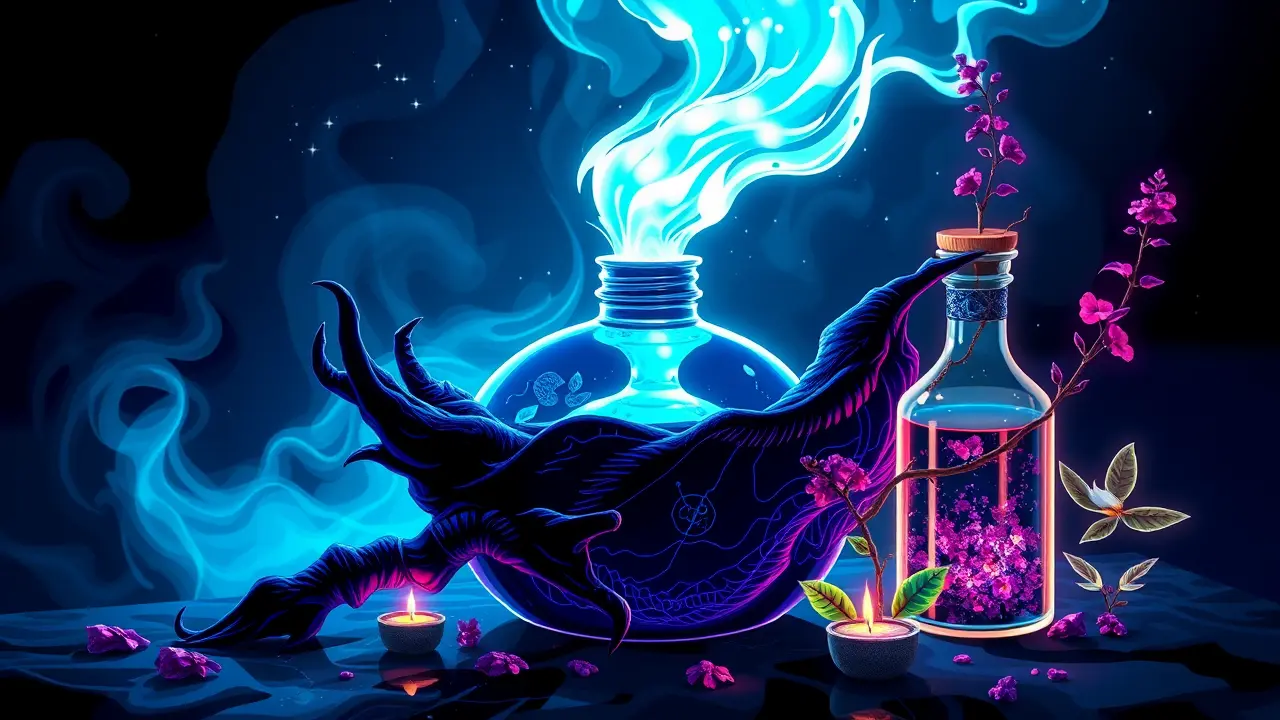
Scienceneuroscience
Ancient Witch Potions Contained Real Medicinal Herbs
RA
Rachel Adams
3 days ago7 min read
The historical narrative surrounding ancient witch potions, often dismissed as mere superstitious folklore, is undergoing a profound reinterpretation as modern scientific analysis confirms these concoctions contained genuine medicinal herbs with tangible pharmacological properties. Beneath the layers of myth and fear-mongering that painted belladonna, mandrake, and mugwort as mere symbols of dark temptation, lies a sophisticated, albeit trial-and-error-driven, understanding of plant-based medicine.These so-called 'witches' were, in many cases, the informal pharmacists and community healers of their era, operating outside the male-dominated, institutionalized medical structures of the time. Their recipes, passed down through oral traditions and clandestine grimoires, were not just random assemblages of creepy ingredients; they were early formulations targeting specific ailments.Belladonna, or deadly nightshade, contains atropine and scopolamine—alkaloids that, in precise and dangerously narrow dosages, can act as antispasmodics and sedatives, potentially alleviating conditions like Parkinson's-like tremors or severe menstrual cramps, while its hallucinogenic properties, which contributed to its infamous reputation, were likely part of ritualistic or divinatory practices. Similarly, mandrake, shrouded in legend for its humanoid root, possesses potent tropane alkaloids similar to those in belladonna and was historically used as an anesthetic for surgeries and a treatment for melancholy, though its narrow therapeutic window meant miscalculation often led to coma or death.Mugwort, a common ingredient in 'flying ointments,' is rich in thujone, a compound with documented effects on the central nervous system that can induce vivid, dream-like states, and it has been used across cultures for its emmenagogue properties to stimulate menstruation and aid in childbirth. This emerging evidence forces a critical re-evaluation of how we categorize knowledge.The persecution of these wise women during the witch trials of the 16th and 17th centuries can be viewed not merely through a religious or misogynistic lens but also as a systematic suppression of alternative, often effective, medical paradigms that challenged the emerging authority of university-trained physicians. The ecological knowledge possessed by these individuals was immense; they understood plant synergies, seasonal harvesting, and preparation methods like infusions and salves that maximized or altered the biochemical potency of their ingredients.Contemporary ethnobotanists, working in tandem with pharmacologists, are now mining these historical texts and folk traditions, recognizing them as invaluable repositories of pre-industrial bio-prospecting. This isn't to romanticize the dangers—many of these plants are lethally toxic—but to acknowledge the empirical, if unrecorded, science behind their use.The legacy of these potions is visible today in our own medicine cabinets; the cardiac drug atropine and the motion sickness patch scopolamine are direct pharmaceutical descendants of these once-feared herbs. This story is a poignant reminder of the fragility of knowledge and how easily entire systems of understanding, particularly those held by marginalized groups, can be erased and demonized, only to be validated centuries later by the very scientific institutions that once supplanted them.It underscores a continuous, often unacknowledged, dialogue between folk wisdom and formal science, a relationship that is increasingly crucial as we search for novel compounds in an era of antibiotic resistance and complex chronic diseases. The real power of these folklore potions, therefore, extends far beyond their biochemical constituents; it lies in their testament to human resilience, intuitive science, and the enduring quest for healing, even when pursued in the shadows.
#witchcraft
#herbal medicine
#folklore
#neuroscience
#pharmacology
#history of medicine
#editorial picks news
Stay Informed. Act Smarter.
Get weekly highlights, major headlines, and expert insights — then put your knowledge to work in our live prediction markets.
Related News
© 2025 Outpoll Service LTD. All rights reserved.
